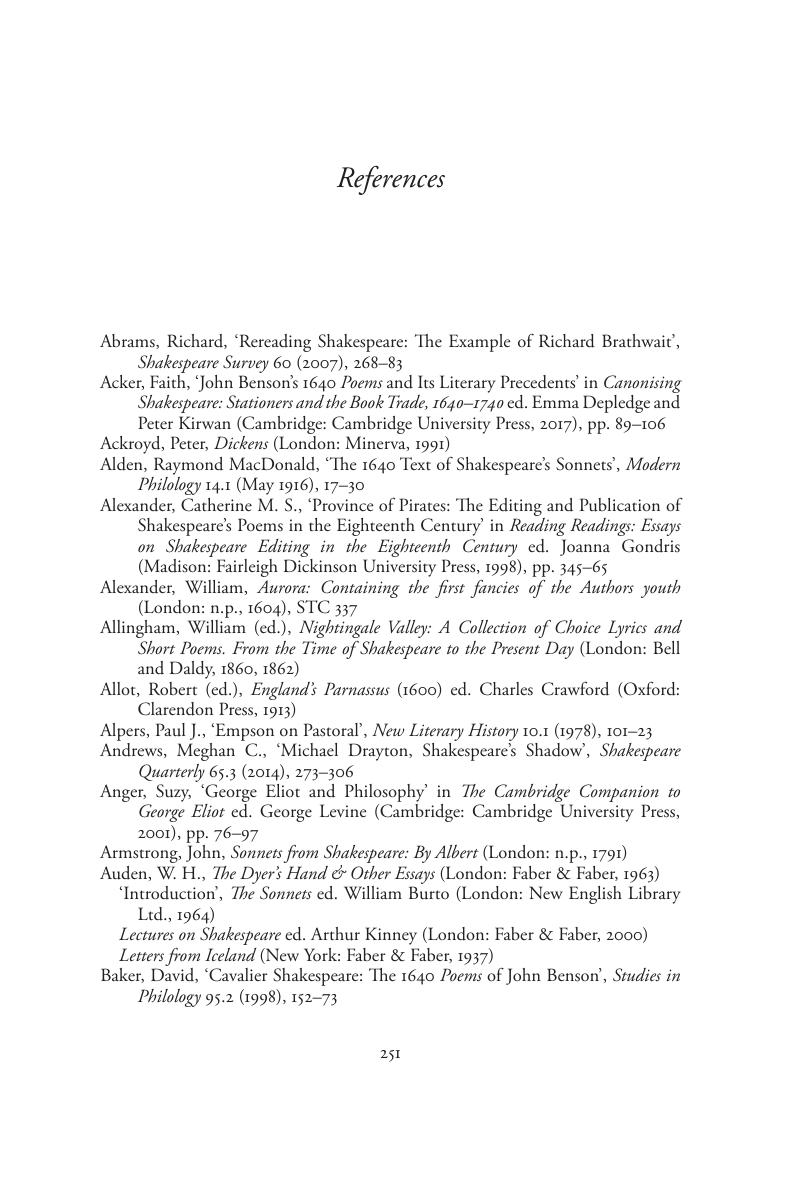Book contents
- The Afterlife of Shakespeare’s Sonnets
- The Afterlife of Shakespeare’s Sonnets
- Copyright page
- Dedication
- Contents
- Figures
- Acknowledgements
- Introduction
- Chapter 1 Loved When They Alteration Find, 1598–1622
- Chapter 2 Annals of All-Wasting Time, 1623–1708
- Chapter 3 One Thing to My Purpose Nothing, 1709–1816
- Chapter 4 As With Your Shadow I With These Did Play, 1817–1900
- Chapter 5 A Waste of Shame, 1901–1997
- Conclusion
- References
- Index
- References
References
Published online by Cambridge University Press: 16 August 2019
- The Afterlife of Shakespeare’s Sonnets
- The Afterlife of Shakespeare’s Sonnets
- Copyright page
- Dedication
- Contents
- Figures
- Acknowledgements
- Introduction
- Chapter 1 Loved When They Alteration Find, 1598–1622
- Chapter 2 Annals of All-Wasting Time, 1623–1708
- Chapter 3 One Thing to My Purpose Nothing, 1709–1816
- Chapter 4 As With Your Shadow I With These Did Play, 1817–1900
- Chapter 5 A Waste of Shame, 1901–1997
- Conclusion
- References
- Index
- References
Summary

- Type
- Chapter
- Information
- The Afterlife of Shakespeare's Sonnets , pp. 251 - 278Publisher: Cambridge University PressPrint publication year: 2019



